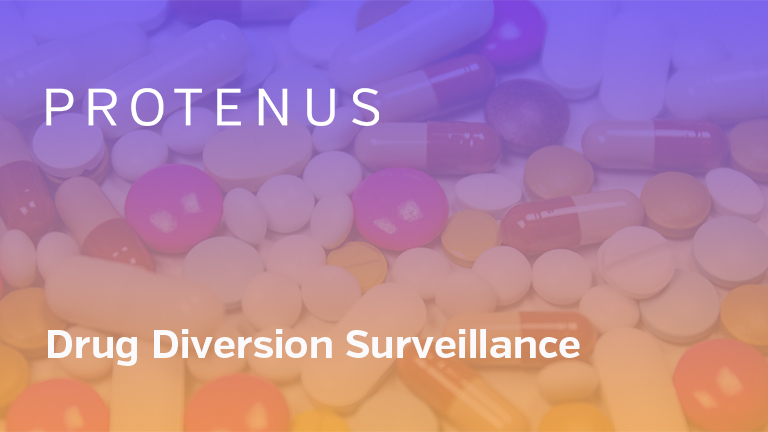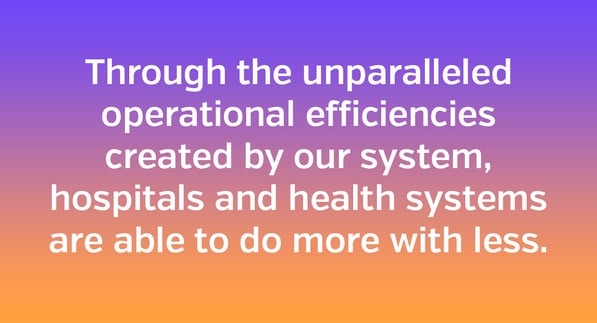Share this

Do More With Less: Using Artificial Intelligence to Prevent Clinical Drug Diversion
by John Mihelic, RPh, Protenus on June 25, 2020
Through conversations with many of our customers, we have heard about the burdens compliance teams face as they try to do more with less. Hospitals nationwide are facing extraordinary challenges to their operating stability as they respond to COVID-19 in their communities; some staff are working longer hours to keep up with demands of patient care; in other cases, staff have been furloughed due to budget cuts and decreased patient admissions.
Despite these challenges, organizations still must address federal and state compliance regulations. Those requirements do not change because of staff availability; if anything, during the pandemic, maintaining regulatory compliance, especially for drug diversion, becomes more of a critical public health mission.
Knowing that hospitals are striving to do more than ever--sometimes with fewer resources than ever--Protenus offers Drug Diversion Surveillance, a module that leverages Artificial Intelligence (AI) to detect and prevent diversion of controlled substances by healthcare workers. Clinical drug diversion creates significant risk and liability for hospitals and can have lifelong ramifications for affected patients. In some cases, patients can develop chronic conditions, such as Hepatitis C or HIV, when diverters contaminate medication needles. Patients may receive inadequate pain medication when diverters steal medications intended for them. The list of potential harms is long. The need to prevent the theft and misuse of controlled substances is essential to ensuring patient safety and to protecting the entire organization.
Compliance challenges during COVID-19
Hospitals in COVID-19 hot-spots, which have moved in early months from the Northeast Corridor to locations across the South and Southwest, face patient loads that often exceed their capacity. Hospital staff continue to face stressors created by long hours, disrupted sleep, and the strain of trying to protect their own families from being exposed to COVID-19.
In facilities that face declining patient admission levels and staff furloughs--sometimes up to a third of their staff--there is risk of important administrative tasks being lost in the shuffle. Staff attending to patient care, operational assignments, and management tasks continue to work long hours to fill the gaps.
The increased stressors on individuals and institutions can lead to increased risk for drug diversion. With fewer staff to monitor legacy diversion programs, and with some staff more vulnerable to acting on their addictive behaviors (i.e., stealing controlled substances), the need for Protenus Drug Diversion Surveillance is greater than ever.
Increase team efficiency
For legacy programs, and for programs using first-generation drug diversion solutions, sifting through countless reports is as inefficient as searching for the proverbial needle in the haystack.
With our next-generation of AI and machine learning, hospital compliance resources are able to better coordinate and consolidate their efforts. Data from several different sources are ingested by the Protenus Drug Diversion Surveillance module and then:
- Examines 100% of controlled substance transactions in the hospital.
- Continuously reviews and analyzes data from multiple sources for anomalies.
- Converts these findings into actionable information.
- Presents case-based reports that customers can use in their investigation.
These reports are aligned with each hospital’s policies regarding impaired workers and medication management policies, as well as with state and federal regulations, ensuring consistent enforcement. Additionally, we work closely with each hospital’s human resources department to configure the system so that all cases involving credentialed personnel are managed appropriately.
 Protenus Drug Diversion Surveillance technology provides unparalleled operational efficiency, thus ensuring patient safety across the medication use process and protecting healthcare organizations from the risks associated with civil or regulatory penalties, accreditation problems, and licensure sanctions; as well as the public damage to its reputation.
Protenus Drug Diversion Surveillance technology provides unparalleled operational efficiency, thus ensuring patient safety across the medication use process and protecting healthcare organizations from the risks associated with civil or regulatory penalties, accreditation problems, and licensure sanctions; as well as the public damage to its reputation.
Download the case study to learn more about how your organization can successfully identify and prevent clinical drug diversion.
Share this
- December 1, 2024 (3)
- November 1, 2024 (1)
- October 1, 2024 (2)
- September 1, 2024 (1)
- August 1, 2024 (1)
- July 1, 2024 (1)
- June 1, 2024 (1)
- May 1, 2024 (1)
- March 1, 2024 (2)
- February 1, 2024 (3)
- January 1, 2024 (1)
- December 1, 2023 (1)
- November 1, 2023 (3)
- October 1, 2023 (3)
- September 1, 2023 (1)
- August 1, 2023 (1)
- July 1, 2023 (2)
- April 1, 2023 (1)
- March 1, 2023 (1)
- February 1, 2023 (1)
- December 1, 2022 (3)
- November 1, 2022 (3)
- October 1, 2022 (1)
- September 1, 2022 (1)
- August 1, 2022 (2)
- June 1, 2022 (4)
- May 1, 2022 (5)
- April 1, 2022 (1)
- March 1, 2022 (4)
- February 1, 2022 (3)
- November 1, 2021 (2)
- October 1, 2021 (3)
- September 1, 2021 (3)
- August 1, 2021 (3)
- July 1, 2021 (4)
- June 1, 2021 (2)
- May 1, 2021 (2)
- April 1, 2021 (2)
- March 1, 2021 (5)
- February 1, 2021 (1)
- January 1, 2021 (1)
- December 1, 2020 (1)
- November 1, 2020 (2)
- October 1, 2020 (2)
- September 1, 2020 (3)
- August 1, 2020 (2)
- July 1, 2020 (2)
- June 1, 2020 (6)
- May 1, 2020 (3)
- April 1, 2020 (4)
- March 1, 2020 (2)
- February 1, 2020 (4)
- January 1, 2020 (2)
- December 1, 2019 (2)
- November 1, 2019 (1)
- October 1, 2019 (1)
- September 1, 2019 (1)
- August 1, 2019 (1)
- June 1, 2019 (1)
- April 1, 2019 (1)
- February 1, 2019 (1)
- January 1, 2019 (1)
- December 1, 2018 (2)
- November 1, 2018 (2)
- October 1, 2018 (2)
- September 1, 2018 (3)
- August 1, 2018 (1)
- July 1, 2018 (2)
- June 1, 2018 (2)
- May 1, 2018 (1)
- April 1, 2018 (1)
- March 1, 2018 (2)
- February 1, 2018 (6)
- January 1, 2018 (2)
- September 1, 2017 (2)
- August 1, 2017 (2)
- June 1, 2017 (2)
- May 1, 2017 (1)
- April 1, 2017 (1)
- March 1, 2017 (2)
- February 1, 2017 (5)
- January 1, 2017 (2)
- December 1, 2016 (3)
- November 1, 2016 (5)
- October 1, 2016 (4)
- September 1, 2016 (8)
- August 1, 2016 (4)
- July 1, 2016 (4)
Subscribe by email
You May Also Like

Conserving Resources with Compliance Analytics: A 5-Step Implementation Guide

Enabling Greater Healthcare Efficiency with Protenus AI Technology

.png?width=1000&height=140&name=Bluesight%20%2B%20Protenus%20Logo%20%20(1).png)
